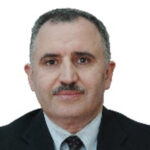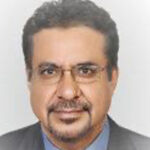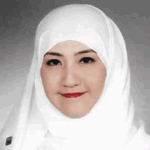Types of accepted Abstract
Only original research and case reports/case studies will be accepted.
Abstract should not have been previously published or presented at a major national or international Conference.
The online system will prompt you to select the most appropriate general topic category for your submission from this list below:
Pulmonary Medicine
Case Report
Ensure your research falls under one of these categories.
These categories will be used for reviewing, evaluating and scheduling purposes.
Scientific Abstracts must contain the following
1. A descriptive title
2. List of all authors and institutions
3. An introduction/rationale/objective of the study
4. The methods used
5. The results of the study
6. Conclusions of the study
ALL SCIENTIFIC ABSTRACTS THAT DO NOT MEET THESE MINIMUM CRITERIA WILL NOT BE ACCEPTED.
Case Reports
Interesting and unique case reports will be considered at the STS2025 International Conference. Abstracts may describe a single case report or a series of associated cases.
Case report Abstracts must contain the following:
1. A descriptive title
2. List of all authors and institutions
3. An introduction
4. A description of the case report
5. A discussion of the importance of the case report
ALL CASE REPORTS THAT DO NOT MEET THESE MINIMUM CRITERIA WILL NOT BE ACCEPTED.
For all Abstracts
The maximum length of an Abstract is 400 words. This count excludes the Abstract title, authors and their designations.
Language
The Abstract must be submitted in English. If accepted, the Abstract must be presented in English.
Research Funding Source
• All Abstracts must specify funding sources: i.e., pharmaceutical firm name, grant name and source or other specific funding sources.
• If you have no specific funding source, please indicate “none.”
• Abstracts of research funded by the tobacco industry sources will be rejected.
Scientific Committee Reviewing and Approving Abstract
1. After the end of the deadline submission, the committee members will start reviewing the submitted Abstracts.
2. The Committee will judge all Abstracts based on a set criteria outlined in the aforementioned guideline.
3. Accepted Abstracts will be notified via email by the STS2025 Conference service 10-14 days after the Abstract submission deadline
4. The Scientific Committee will nominate one Abstract.
5. The committee will select two abstracts to receive the “Outstanding STS 2025 Abstract Award.
6. The winning author will be notified by email. If the author does not confirm his/her attendance to receive the award within 48 hours of the notification, the ranking will go to the next nominated Abstract according to the ranking made by the Committee.
Authors
• The person who submits the Abstract will automatically be the Presenting Author. The Presenting Author will be listed first.
• The person who submits the Abstract is responsible for the accuracy of the Abstract content.
• The submitter (Presenting Author) is responsible for ensuring that all co-authors have agreed to be listed on the Abstract and have knowledge of the Abstract’s submission.
• The Presenting Author must not use the session as a marketing opportunity for products/equipment.
Power Point Poster Presentation Instructions
Accepted abstracts will be requested to present as oral poster presentations. The allocated time for each poster is 10 minutes:
Here is a general guideline on how to present your oral poster
1. Introduction (1 minute):
– Introduce yourself and your affiliation.
– Clearly state the objective of your research.
– Provide a brief background of the topic.
2. Research Methodology (1 minute):
– Explain the methodology or study design used in your research.
– Highlight any unique or innovative aspects of your approach.
3. Results (3 minutes):
– Present the key findings of your research.
– Use high-quality visuals to enhance the understanding of your research
– Include relevant images, graphs, and tables that support your findings.
– Emphasize any significant or noteworthy outcomes.
– Provide statistical data, if applicable.
4. Discussion and Interpretation (3 minutes):
– Analyze and interpret the results in the context of the research objective.
– Discuss the implications and significance of your findings.
– Address any limitations or challenges encountered during the study.
5. Conclusion (1 minute):
– Summarize the main points and conclusions of your research.
– Highlight the potential impact or future directions of your work.
6. Q&A Session (remaining time):
– Engage with the audience by inviting questions and providing thoughtful responses.
– Be concise and clear in your answers.
– If necessary, offer to continue the discussion during the conference or provide contact information for further inquiries.
Additional tips:
– Practice your presentation multiple times to ensure you stay within the allocated time.
– Use visual aids that are easily readable from a distance and support the key points of your research.
– Speak clearly, maintain good eye contact, and use confident body language.
– Prepare concise notes or speaking points to help you stay focused and organized during the presentation.
– Dress professionally and be attentive to your posture and gestures.















































































